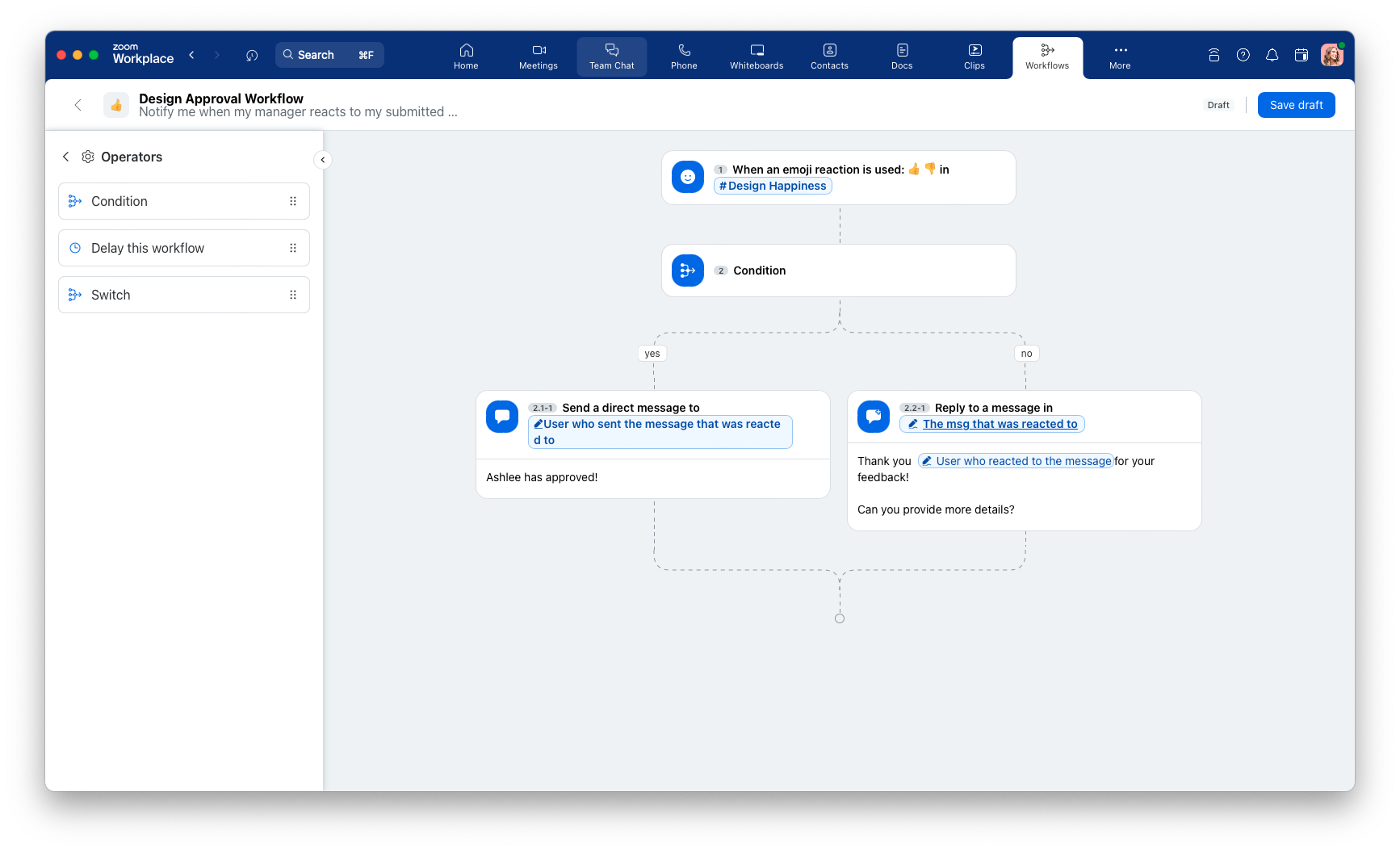Zoom has launched Workflow Automation, a no-code tool designed to enhance efficiency and reduce the time spent on routine tasks.
The feature enables users to build complex workflows across Zoom Workplace and third-party applications.
Wei Li, Head of Zoom Team Chat at Zoom, said: “We built Workflow Automation to be easy for teams of all sizes and abilities to use.
“We’re launching Workflow Automation with Team Chat first because it’s an opportunity to strengthen collaboration with team members and get work done asynchronously,”
“Workflow Automation helps teams by taking the guesswork out of setting up workflows and helps cut down on tedious and repetitive tasks.”
No Code Workflows
Workflow Automation will initially integrate with Zoom Team Chat but will eventually span the Zoom Workplace platform.
The drag-and-drop functionality of Workflow Automation allows users to build workflows without needing technical or coding skills.

Users can set up automated messages in Team Chat to introduce new members, create recurring reminders for project updates, simplify time off requests, and collect feedback through questionnaires in a chat channel.
The no-code design of Workflow Automation ensures it is accessible to users with varying technical skills. Pre-built templates simplify everyday tasks like onboarding new members or managing approval processes for time off requests. Zoom plans to expand its template offerings to meet diverse business needs over time.
Workflow Automation is available to paid Zoom users during the beta period at no additional cost, though availability may be limited by region and industry. Upon general availability, paid plans will include unlimited standard workflow runs and allocations of premium workflow runs, with charges applied for overruns.
Beyond Video
Workflow Automation is another sign of Zoom expanding beyond its video routes.
Zoom’s Chief Growth Officer Graeme Geddes recently said that Zoom wants to be known as an “AI-first collaboration platform,” moving beyond its reputation as a video conferencing service.
While video remains a core component, Zoom has evolved into a comprehensive unified communications and collaboration solution.
In a Fortune interview, Geddes said Zoom is much more than just video meetings and highlighted its innovation in AI and other areas.
He cited the acquisition of Workvivo, a platform unrelated to video, as an example of Zoom’s broader capabilities. Zoom also offers chatbot automation services that can escalate to phone calls and various workflows that do not involve video. The company has introduced the likes of Zoom Workplace, launched in March, to integrate communication, collaboration, and workplace management into a single hub.







